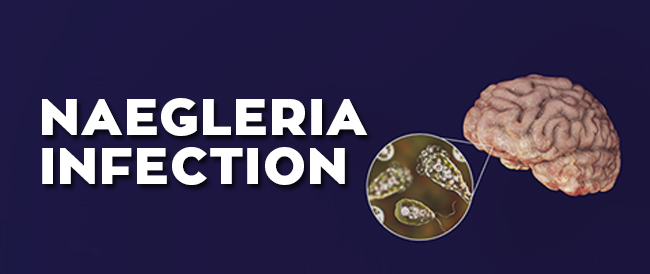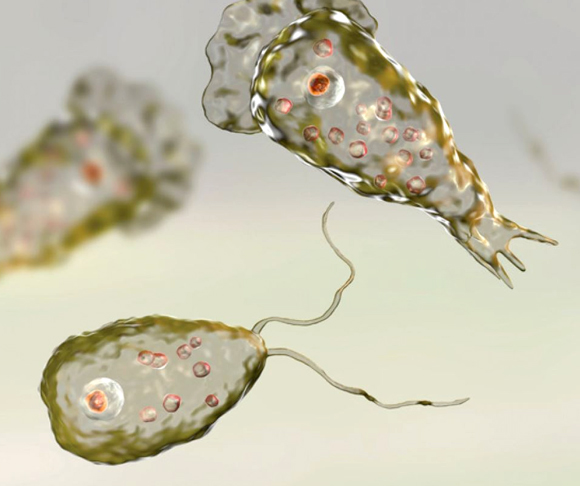
Naegleria Infection
What is Naegleria Fowleri?
Naegleria fowleri is refers to a genus of single-celled organisms, which is a free-living amoeba commonly found in warm freshwater environments, such as lakes, hot springs, and poorly maintained swimming pools. It is commonly called the “brain-eating amoeba” because it can cause a brain infection when water containing the ameba goes up the nose.

FAQs
The symptoms of Naegleria infection include:
- Severe headache
- High fever
- Nausea
- Vomiting
- Stiff neck
- Sensitivity to light (photophobia)
- Altered mental status (confusion, disorientation)
- Loss of balance
- Seizures
- Hallucinations
- Coma
People become infected when water containing Naegleria fowleri enters the nose and the ameba migrates to the brain along the olfactory nerve. People do not become infected from drinking contaminated water. The infection is caused by the following modes of exposure: Water Activities: Naegleria fowleri infection most commonly occurs when contaminated water enters the body through the nasal passages. Activities that can lead to exposure include swimming, diving, water sports, or even using contaminated water for nasal irrigation or sinus rinsing.
- Microscopic examination of fresh, unfrozen, unrefrigerated cerebrospinal fluid (CSF).
- Polymerase Chain Reaction: amplify DNA from the amebae in cerebrospinal fluid or tissue
- Antigen Detection
To prevent Naegleria fowleri infection, you can take the following precautions:
- Avoid warm freshwater: Don’t swim in lakes, hot springs, or stagnant pools.
- Use nose protection: Wear nose clips during water activities.
- Be careful with nasal irrigation: Use sterile water for neti pots.
- Follow pool guidelines: Ensure proper maintenance and chlorination.
- Stay informed: Know about local Naegleria fowleri presence.
- Use safe water for ablution: Boiled or distilled water only for nasal irrigation.
Currently, PAM is treated with a combination of drugs, often including amphotericin B, azithromycin, fluconazole, rifampin, miltefosine, and dexamethasone. These drugs are used because they are thought to be effective against Naegleria fowleri and have been used to treat patients who survived.
Naegleria symptoms may be mild at first and include headache, fever, nausea, or vomiting. Later symptoms may include stiff neck, confusion, seizures, and hallucinations. The disease generally causes death within about 5 days after symptoms start.




